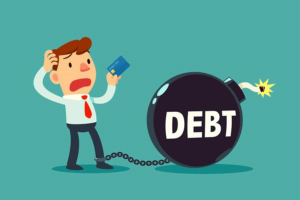If you are struggling with debt, and it’s causing some serious stress. Don’t worry; money matters can be overwhelming. But guess what? There’s a way out, and it’s called a debt management plan (DMP).
Now, before you dive in, it’s essential to understand what a DMP is all about and how you can get started. Think of it as your roadmap to getting your finances back on track and kicking those debts to the curb.
Ready? Dive in and tackle those debts head-on!
To get a Debt Management Plan,
1. Understand What a Debt Management Plan Is
2. Know the Difference Between Debt Relief and Debt Management Plan
3. Access Your Financial Situation
4. Research Credit Counselling Agencies
5. Schedule a Counseling Session
6. Enroll in a Debt Management Plan
7. Make Monthly Payments
Summary
1. Understand What a Debt Management Plan Is
To get a Debt Management Plan, understand what a debt management plan is.
Picture this: You’ve got multiple debts, like credit card bills, personal loans, and maybe even medical expenses, all vying for your attention and money—it can get pretty chaotic!
Now, a debt management plan swoops in to save the day. It’s a structured program designed to help you manage and repay your debts more efficiently. The goal is to make your debt situation more manageable and less stressful.
Here’s how it works: You team up with a credit counseling agency, and they become your trusty sidekick throughout this journey. They take a close look at your financial situation, including your income, expenses, and debts. Once they’ve got a good grasp of what’s going on, they’ll create a custom plan just for you.
The agency then reaches out to your creditors and tries to negotiate lower interest rates, reduced fees, and more flexible payment terms on your behalf.
With all these negotiations in place, you make a single monthly payment to the credit counseling agency instead of juggling payments to different creditors. The agency takes care of distributing the funds to your various debt accounts according to the new terms they’ve hammered out.
One major benefit of a DMP is that it often helps you pay off your debts faster, as the reduced interest rates and fees can save you some serious bucks. Plus, it simplifies your life because you’re dealing with just one payment each month.
Typically, these plans last a few years, depending on your debt amount and your ability to keep up with the payments.
>>>MORE: How Business Credit Cards Work
2. Know the Difference Between Debt Relief and Debt Management Plan
To obtain a Debt Management Plan, Know the Difference Between Debt Relief and Debt Management Plan.
Debt relief refers to various strategies and programs designed to help you reduce the total amount of debt they owe. There are a few common types of debt relief options:
Debt Settlement:
In debt settlement, a debtor negotiates with creditors to pay a reduced amount, typically a lump sum, to settle the debt. This means you end up paying less than the original debt amount, but it may have a negative impact on your credit score.
Bankruptcy:
Bankruptcy is a legal process where individuals or businesses declare themselves unable to repay their debts. It can provide relief from overwhelming debt but has serious consequences on your credit and financial future.
Debt Consolidation:
Debt consolidation involves combining multiple debts into one new loan with a lower interest rate or lower monthly payment. This simplifies debt management and may reduce overall interest costs.
The main difference between debt relief and a DMP lies in their approach. Debt relief aims to reduce the overall debt burden through negotiation or legal processes, while a DMP focuses on helping you manage your existing debts by creating a more manageable repayment plan.
3. Access Your Financial Situation
To secure a Debt Management Plan, access your financial situation.
Think of it as taking a magnifying glass to your money matters, but no worries—it’s not as intimidating as it sounds.
List out all your debts. Credit cards, personal loans, car loans, student loans, store credit—anything you owe money on. Lay it all out on paper.
Now, tackle the income side. Write down all the money coming in every month—your paycheck, side hustles, any cash from selling stuff online, you name it.
Time to face the expenses. List out all your monthly bills and living expenses—rent or mortgage, utilities, groceries, transportation, entertainment.
Crunch some numbers! Subtract your total monthly expenses from your total monthly income. This gives you an idea of how much cash you have left after the necessities are covered.
Now, take a closer look at your debts. Check out the interest rates, minimum payments, and due dates for each one. This way, you know which debts might be causing you the most trouble.
Ask yourself some honest questions: Are you struggling to make minimum payments? Are your credit cards maxed out? Are you getting calls from debt collectors? Don’t worry; you are trying to understand your situation better.
By taking this snapshot of your finances, you have a clearer view of where you stand and whether a DMP could be a helpful option. It’s like getting a health checkup, but for your wallet!
>>>PRO TIPS: Business Credit Cards: How to Qualify for One
4. Research Credit Counselling Agencies
To access a Debt Management Plan, research credit counselling agencies.
Look for non-profit agencies. These are usually more focused on helping you rather than making money off your situation. Non-profits tend to have your best interests at heart.
Check for accreditation and legitimacy. You don’t want to end up with a shady agency, right? Look for certifications or accreditations from trustworthy organizations like the National Foundation for Credit Counseling (NFCC) or the Financial Counseling Association of America (FCAA).
Read reviews and testimonials. What are other people saying about their experiences with these agencies? Look for feedback from real folks who’ve been through DMPs with them.
Check for any complaints or red flags. You can look up the agency’s name followed by “complaints” to see if any major issues pop up.
Make a shortlist of your top contenders. Narrow down your options to a handful of agencies that seem legit and have positive reviews.
Reach out to the agencies on your shortlist and ask some questions. Find out about their DMP process, how they handle negotiations with creditors, and what fees they charge (if any).
5. Schedule a Counseling Session
To procure a Debt Management Plan, schedule a counselling session.
Look for non-profit organizations, as they tend to have your best interests at heart. Give them a call! Remember, take a deep breath—there’s no need to be nervous. They’re here to help, and they’ve heard it all before.
Introduce yourself and let them know you’re interested in scheduling a counseling session. They’ll probably ask for some basic info like your name, contact details, and a bit about your financial concerns.
Once you’ve locked in a date and time, mark it on your calendar. This is an important step towards gaining control of your finances, so treat it like any other essential appointment.
On the big day, get ready to chat openly and honestly. Don’t hold back! The more they know, the better they can tailor their advice to your needs.
By the end of the session, you have a better understanding of your financial options and the steps you can take to improve your situation.
>>>GET SMARTER: Business Credit Cards: Full Guide to Getting Approved Fast
6. Enroll in a Debt Management Plan
To secure a Debt Management Plan, enroll in a Debt Management Plan.
After your counseling session, the credit counselor gives you all the details about the DMP and how it can work for you. If you feel like it’s the right fit, let them know you’re ready to take the plunge!
Once the negotiations are done, get a shiny new DMP proposal outlining the details. Take a look and make sure you’re comfortable with the terms and the monthly payment they’ve worked out for you.
If everything looks good (and it usually does!), it’s time to seal the deal. Sign on the dotted line and officially enroll in the DMP.
7. Make Monthly Payments
To complete your Debt Management Plan, make monthly payments.
Mark your calendar! Set a specific date each month as your “DMP Payment Day.” Treat it like a mini celebration—a chance to make progress on your financial goals!
Take advantage of technology and set up automatic payments with your bank. This way, you won’t miss a beat, and your payments will be on time, every time.
As you see those debts getting smaller and smaller, stay committed to your DMP. Keep making those monthly payments until you’ve conquered every last debt on your list!
Summary
The DMP is all about regaining control of your finances, stepping into a brighter financial future, and becoming the expert in your money. So, if you’re ready to kick debt to the curb, the debt management plan is here to save the day! You’ve got this!








No Comment! Be the first one.